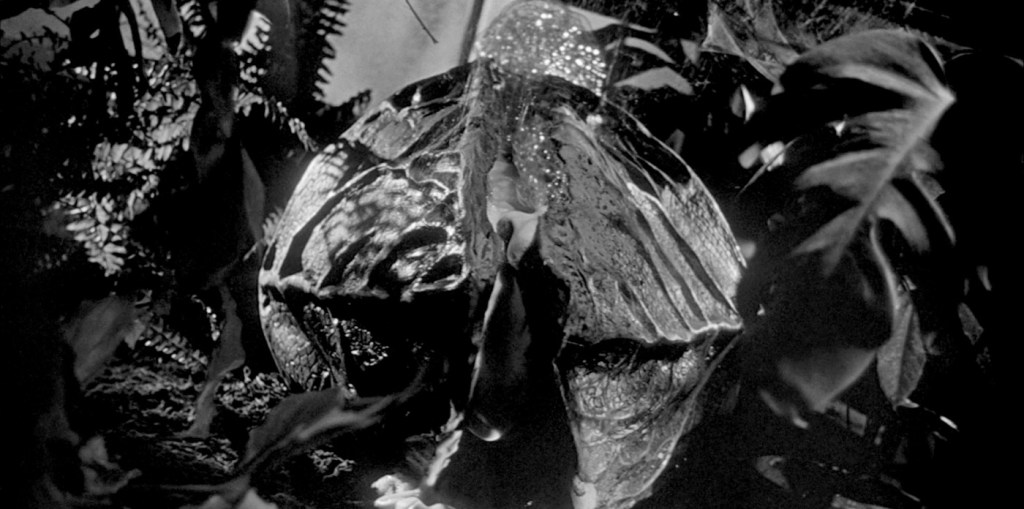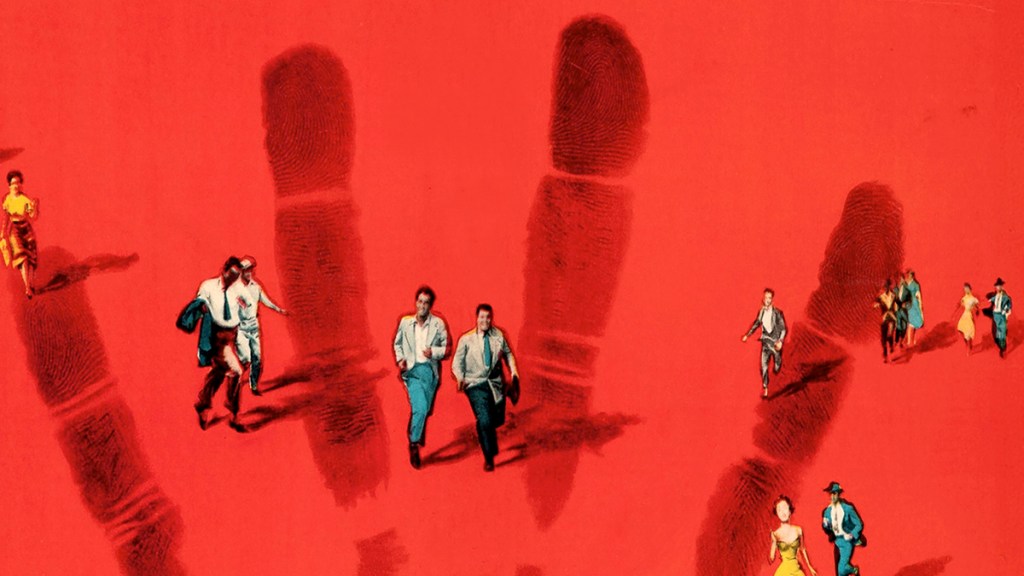It’s a terrifying fear: you wake up one day, and your loved one isn’t the person you thought they were. The warm spark is gone, replaced by loyalty to a collective that wants to oppress and suppress you. You can’t reason with them, knowing they will wait to catch you with your guard down and take over. The only way to be safe is to stay awake — forever! — and hope others believe you.
If that sounds like a contemporary theme, it’s because it always has. Jack Finney’s magazine serial-turned-novel The Body Snatchers gets remade as a movie every generation, representing (or maybe just reflecting) something different every time. Today it could represent families divided by politics; in previous films, it was a theme that critiqued the military and the hippie counterculture. In the very first movie version, Don Siegel’s 1956 Invasion of the Body Snatchers, there’s still some disagreement as to whether the movie was specifically meant to critique certain movements or ideologies. Yet, as seen in utmost clarity on the new 4K release, it may be a bit of a rorschach test. Whatever unified, internally conformist movement you fear most is what the pod people are.
[Note: images in this review are stills from the movie, not screencaps from the 4K]
Growing Threat
Like The Twilight Zone, which certainly drew inspiration from it, Invasion of the Body Snatchers holds up because it relies on story and acting rather than special effects. The limited effects we do see, however, mostly a combination of life-casts and active soap suds, hold up well enough. Yet it’s the casting of Kevin McCarthy, in the role that would most define his career, that makes the movie what it is. Typical alien invasion movies of the ’50s cast handsome stiffs as the (usually) two-dimensional heroes, making the monsters always more interesting by comparison. McCarthy in 1956 recalls what Tim Burton said of Michael Keaton in Batman: he looks like a normal guy, but he also looks like he’s not. On the surface, McCarthy’s conventionally handsome; in close-up, especially when he gets agitated, there’s a wild man within.

The slow build-up of the story involves McCarthy’s Dr. Miles Bennell returning home from a medical conference to find that many of his neighbors are complaining about relatives seeming a little different. It seems like a delusion, but one that’s spreading. Until it doesn’t; previously hysterical patients suddenly, and eerily calmly, declare that everything is normal again, and they must have been mistaken.
Mannequin on the Move?
Eventually, of course, he discovers strange body doubles in basements and giant alien seed pods that spit forth human replicas. From there, the film becomes a chase and a race to escape a town that’s been entirely coopted. Thanks to a wraparound segment that the studio insisted upon to make the ending less grim, we know Bennell will make it to another hospital and be declared crazy until he tells his story and evidence turns up to corroborate it. Even this “happier” version leaves things partly ambiguous: the military is called, but the movie ends before we see how they fare or if they can defeat the pods completely.

Ironically, Finney’s novel ends optimistically, with the Body Snatchers deciding humans are too determined as foes, then giving up and floating back into space, a choice none of the movie adaptations has duplicated. This may be what makes the movies seem more overtly political — they suggest an existential threat, one that cannot simply be beaten back by humans being humans.
The popular interpretation of the first film is that it’s anti-Communist, a product of the Cold War, and director Don Siegel’s right-wing politics (he is perhaps best-known for Dirty Harry). Siegel rejected an interpretation that narrow, while Finney, a former ad man, took his inspiration from TV commercials and a then-monolithic, unified pop culture suddenly being beamed into every affluent home. In our currently fragmented mediascape, that may almost seem quaint.
In Brightest Day…
The new 4K transfer comes in both Siegel’s shooting ratio of 1.85, and the projected “Superscope” version that trimmed the top and bottom for an ultra-widescreen 2.00 ratio. Both versions look fine, with the letterbox bars only slightly bigger on the 2.00. There’s a lot of actual night shooting in the film, as well as day-for-night, and it’s never difficult to see what’s going on. Black and gray levels are mostly impeccable, with only one or two shots out of focus and one photographic still as establishing shot much more evident as such now that the grain is blown up. The vintage trailer on the disc, so blown out as to look like a scene from THX-1138, makes quite the contrast. (A trailer for the 1978 remake is also included.)

The disc — both the 4K and the included Blu-ray — includes four commentary tracks, two of which originally came from the 2018 Olive Films Blu-ray. The first of these features leads McCarthy and Dana Wynter in conversation with Joe Dante, a superfan of the film who frequently cast McCarthy in his own movies. Both actors died in 2010 and 2011, respectively, but they sound quite lively and well and have sharp memories of the film. It’s a delight. The other archival commentary is from film historian Richard Harland Smith, who seems to think he’s the one who came up with the idea that the film is a riff on advertising and TV monoculture. (McCarthy flat-out says that was Finney’s intent on the other track.) His commentary is otherwise quite factual and trivia-heavy.
Pods-on Favorites
Additional commentaries include one by film scholar Jason A. Ney, who frequently compares the movie to the book, and one by historians Steve Mitchell and Nathaniel Thompson, who geek out together over the elements of the film that they really like and how Siegel pulled it off.

The Blu-ray includes other archival featurettes — one with Joe Dante and Larry Cohen discussing their love of the film, one with Siegel’s son Kristoffer Tabori reading his father’s writings on the film and offering commentary of his own, and finally a brief biography of producer Walter Wanger, narrated by historian Matthew Bernstein. Wanger’s own left-wing politics and opposition to HUAC may help put the lie to the notion that the film is about Communists.
Not that it should matter — the beauty of the premise is that it could be about almost anything, from religious cults to age-related dementia. It’s about a loss of control that’s absolutely out of your hands, though you might be able to outrun it for a time. It was a rare genre B-movie aimed at adults at the time, albeit one kids wanted to see anyway. As such, it may feel slow to younger viewers today, but the buildup is worth it when the payoff comes. In this fine Kino Lorber presentation, you also get to learn nearly every detail about its creation from those who were there, those who loved it then, and those who’ve studied it as history.
Grade: 5/5
Kino Lorber’s Invasion of the Body Snatchers on 4K is available now.




